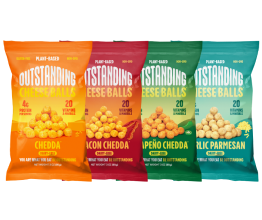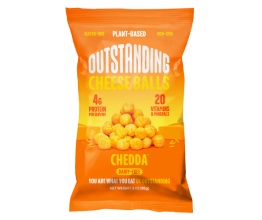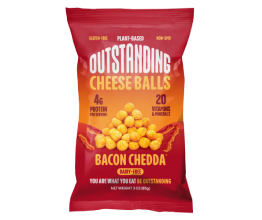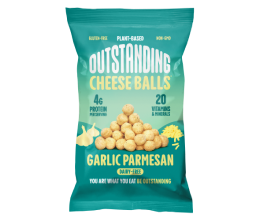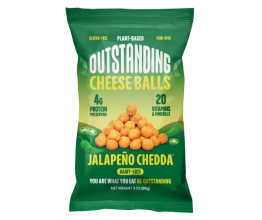What Is Citric Acid? Benefits and Uses
Sometimes it feels like you need a degree in chemistry to figure out some of the ingredients in your favorite foods. Some of those items are tough to pronounce and seem to originate from a different dimension.
The truth is that many of those ingredients come from natural sources and are totally safe to consume, so don’t worry too much – you just need to know the facts.
Citric acid is the perfect example of an ingredient that is commonly misunderstood but is actually quite important in a whole bunch of recipes and cooking techniques.
We’re here to make sense of citric acid in simple terms, starting from a science standpoint and working our way into the kitchen with different applications and uses. We’ll even touch on a few of the nutritional benefits that citric acid can offer.
Let’s learn all about citric acid, starting now!
What is Citric Acid?
Ask a chemist, a cook, and a housecleaner about the definition of citric acid, and you’ll get a few distinctly different answers. You might wonder if they’re even talking about the same product.
That’s the amazing thing about citric acid, which is basically just a natural compound concentrated in citrus fruit and some other organic materials.
Citric acid is considered a “weak acid,” but we’re not throwing shade. That just means that it has a pH level that lands between a three and a six. This acid is not particularly corrosive and is mostly used these days in a solid, crystallized form. It doesn’t look like anything special on the surface, but this powder packs a punch in many different ways.
Origins of Citric Acid
As you probably could have guessed, citric acid was originally derived from citrus fruits like lemons, limes, and oranges (seriously yum). While it’s possible to isolate the compound from citrus juice, this process is difficult and expensive to perform at scale.
It wasn’t until 1917 that American food chemist James Currie found a faster, more cost-efficient way to produce citric acid from an unlikely source: Aspergillus niger.
That’s right – black mold can produce safe and effective citric acid at an industrial level, and the same techniques used over 100 years ago are still applied today.
The process involves feeding the mold a high sugar diet in the form of corn starch or cheap molasses. The mold is then filtered out from the sugary solution, and calcium hydroxide is added to yield calcium citrate salt. The final product is achieved by treating the salt with sulfuric acid.
It’s a little complicated, but the point is that we now have affordable, reliable citric acid available for daily use, thanks to the efforts of scientists and engineers.
Non-Food Uses
Before we get into the numerous ways citric acid can be used in food, let’s talk about some other common applications of the compound.
Cleaning Products
Citric acid can help remove tough stains from coffee, tea, chocolate, and wine. It can also help remove hard water buildup. Look for citric acid the next time you’re shopping for an effective home cleaning product. Citric acid can definitely do you a solid when you spill your iced coffee on your favorite white shirt.
Medical Uses
Citric acid can keep away infection by killing harmful bacteria on the skin’s surface or in wounds. It can also lower acid levels in the body and prevent gout when combined with sodium citrate and potassium citrate.
Personal Care and Cosmetics
The citric acid in skincare products can improve dark spots and fine lines! Products with citric acid can also be formulated for safe application in lipstick, soap, detergent, and even baby powder.
Citric Acid Uses in Food
The versatility of citric acid is impressive for sure, but now it’s time to talk about the application we all care about most of all: food!
The FDA says that citric acid is “generally recognized as safe” as a food additive, which is good enough for us.
Here are a few different ways that citric acid can be used in the kitchen and the best way to buy and store the ingredient for your own use at home.
Cooking
If you have any home cooking experience (and yes, watching Cupcake Wars totally counts), you know the importance of acid as an element of a balanced dish.
We may not realize it, but favorite foods have the right amount of acid to counterbalance bitterness and complement other flavors like salt, sweetness, and umami. Acidity also adds depth to foods that might otherwise be one-dimensional in flavor.
Think about how nice it is to blast a piece of salmon or a salad with some fresh lemon juice right from the fruit itself. Citric acid does a similar thing but in a much more controlled, measurable, and neutral manner.
For example, citric acid can be used in marinades or dressings when you simply want pure acidity without the extra flavors that come from ingredients like vinegar or fruit juice.
It’s also a solid ingredient, meaning you don’t need to worry about the levels of liquid in your dish. You know exactly what you’re getting every time, and it’s easy to deploy the perfect amount in different situations.
Baking
Bakers are well-equipped to employ a powerful ingredient like citric acid, and they’re probably more familiar with the ingredient already.
If you love to bake, you’ve probably used ingredients like buttermilk (an acidic dairy product), vinegar, or lemon juice before. Citric acid is just a more direct, precise, and economical way to achieve that tart flavor in your baked goods.
Combined with baking powder, for example, citric acid creates carbon dioxide gas bubbles, which help improve the leavening of bread. This is especially important in vegan baking, where you can’t use eggs or buttermilk.
The next time you’re making bread without a sourdough starter or need some extra punch ink your lemon squares, consider adding a pinch or two of citric acid to the mix.
Preserving
Preservatives sometimes get a bad rap in the health-conscious community but remember, we rely on compounds like citric acid to extend the shelf life of our favorite foods and allow for safer consumption overall. It’s a tradeoff we’re willing to make, so long as the ingredients are natural and have no adverse effects.
Citric acid is used as a safe preservative on an industrial level, but it’s also effective for fast and easy preservation in your own kitchen.
Cut fruits and vegetables, for example, can benefit from a sprinkle of citric acid powder to keep them looking fresh. The same goes for dishes that oxidize and brown quickly, such as guacamole (so you can save that avocado toast for a little later).
If you’re canning fruits or homegrown tomatoes, citric acid is also important to maintain proper acidity levels within the jar without overdoing it on liquid from lemon juice or vinegar.
Buying and Storing Citric Acid
We suggest you scoop up a bag of citric acid from the health food store or buy some online. Citric acid is affordable, lasts for several years, and should be stored in a cool, dark pantry drawer with other ingredients like baking powder, sugar, salt, etc.
A little goes a long way when it comes to citric acid, so don’t worry about depleting your stash too fast.
Outstanding Flavors from the Pros
Now that you’ve got the lowdown on citric acid, we’ve got a secret to share with you from Outstanding Foods. You guessed it – citric acid is a critical ingredient in our addictively delicious snacks and seasonings, and it helps keep our foods healthy and fresh.
Here are a few examples of citric acid in action from our kitchen.
Tasty, Healthy Snacks
We are known for creating famous snacks that pack flavor, crunch, and nutritional value. Citric acid helps us make our renowned PigOut Pigless Pork Rinds, which come in stellar flavors like Nacho Cheese and Texas BBQ.
Our Outstanding Puffs are also known for a superb taste with the added benefit of extra vitamins, minerals, and yes, more flavors like Chili Ranch and White Chedda.
Supercharged Seasonings
Where citric acid really shines is in our seasoning collection, which takes the essence of our bagged snacks and allows you to sprinkle flavor on anything you want.
Popcorn, roasted garbanzo beans, trail mix – whatever strikes the mood at the moment, you can shake some phenomenal flavors onto your snack and instantly elevate the experience.
Something Everyone Can Enjoy
The best part about an ingredient like citric acid is that pretty much everyone can dig into our snacks without worrying about dietary restrictions or allergies. It contains few calories, totally vegan, plus it’s dairy and gluten-free. It’s so reliable, it can basically be your emergency contact.
In Conclusion
Citric acid adds a delicious dimension to so many dishes, whether you pick up some Outstanding Foods or make your own snacks at home with our famed seasonings.
Sources:
What Is Citric Acid and How Is It Used? | The Spruce Eats
